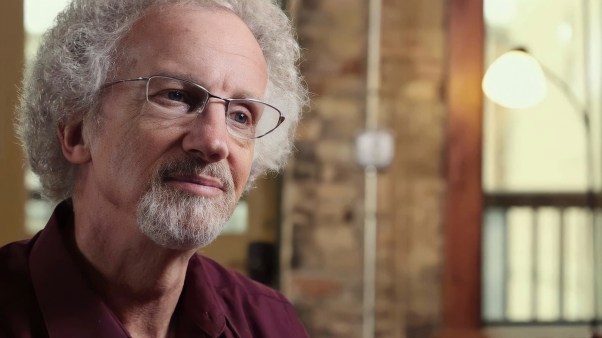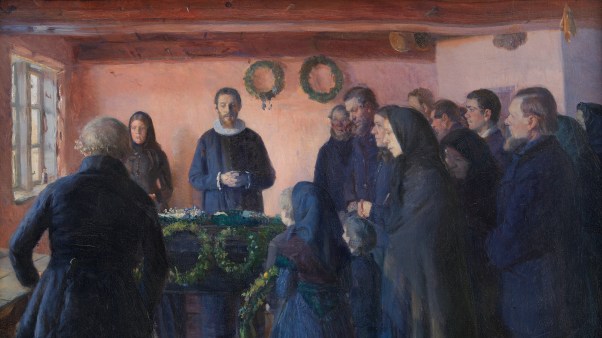In this series
Tourists in Lancaster County, Pennsylvania tend to assume that they are at the center of the Anabaptist world (not true—more Amish live in Ohio today than in Pennsylvania) and that the Amish are the largest and most significant group of Anabaptists (also not true—Mennonites and Brethren are actually more numerous than the Amish). As a service to the uninitiated, here are some key distinctives of these groups.
Amish
Conceived in a dispute between Swiss Anabaptist leaders in the 1690s (pp. 14- ), Jakob Ammann’s following is in many ways the most conservative of the “plain groups.” The Old Order Amish—roughly 180,000 strong or 16 percent of American Anabaptists—spurn motor vehicles, refuse public utilities, educate youth only up through the eighth grade, and meet in homes for worship. Most Amish dress in “plain” or uniform clothing to emphasize order, modesty, and humility in the community. Men are expected to grow beards, while women cover their heads. All of this is governed by the Ordnung, a mostly oral set of behavioral expectations passed down through generations.
But over 15,000 Amish belong to branches (Beachy Amish and Amish Mennonites) that do use public electricity, worship in meetinghouses, and drive automobiles. These separated from the Old Order in the late 19th and early 20th centuries as they accepted mainstream Protestant forms of ministry (missions, Sunday Schools, etc.) and appropriated new technologies.
The Amish are also decentralized. Except for a loosely organized National Amish Steering Committee, they do not run bureaucratic organizations that oversee denominational programs. Individual congregations or “church districts” enjoy significant autonomy and exhibit variations in dress and practices. For example, Lancaster county Amish women prefer purple fabrics, while other settlements choose blue or red—though all are solid-colored. Amish children are dressed in traditional garb, though some teens opt for T-shirts and jeans until they decide to join the community.
Brethren
Bigger yet, and much more “progressive,” are the Brethren, who make up nearly 40 percent of American Anabaptists. Originating in Germany in 1708, Brethren mix Pietist belief and practice (pp. 14- ) with Anabaptist nonconformity and biblical pacifism.
This group tends to be more evangelical and individualistic in its approach to matters of faith and stresses the importance of loving relationships. After baptism, the most significant ritual is the love feast, which brings members together to take communion and enjoy a concentrated time of fellowship (p. 29). Unlike the Amish, contemporary Brethren have few reservations about technology. They place greater responsibility on the individual to refrain from activities that would compromise his or her faith, rather than expecting church leaders to enforce restrictions.
That’s not to say they haven’t struggled and split. The Brethren have held annual meetings since 1770 that served the function of the Amish Ordnung in shaping their identity and practice. The largest group, the Church of the Brethren, with about 135,000 members, is today a mostly mainstream denomination. But other Brethren have broken off, notably the Old German Baptist Brethren, who rejected “evangelistic innovations” in the late 19th century and wanted to retain “simpler practices” of plain dress and traditional rituals.
Other groups, like the Dunkard Brethren, left the Church of the Brethren because it was “drifting away from apostolic standards and settling back into the world.” The Brethren in Christ (originally called the River Brethren) technically did not break off from the Church of the Brethren but emerged from late 18th-century Mennonites living in eastern Pennsylvania who were attracted to Brethren beliefs.
The Old German Baptist Brethren, the Dunkard Brethren, and the Old Order River Brethren dress plain, but they allow patterned fabrics, and they do not press their children to wear traditional garb if they are unconverted. In these groups Brethren women wear head coverings, but these women have a keen sense of the coverings’ scriptural origins (1 Corinthians 11:5, 13) and wear them as symbols their attitude toward the church body. As one woman explained it, “It’s a point of submission to God, to my husband, and to the community.” Plain dress was abandoned by most of the Church of the Brethren beginning in the 1920s.
Mennonites
Mennonites, who number over 340,000 in several denominations—making up 43 percent of all American Anabaptists—may be the most diverse group of all. Some migrated from Germany and Switzerland starting in 1683, while others hail from 19th-century Holland and Russia. And in recent years, Mennonite missionaries have birthed churches in Africa, Asia, and Latin America. Many Mennonites have embraced modern technology and evangelical forms of Protestant Christianity, but fully 30 percent of them hold, in some form, to traditional ways.
Old Order Mennonites, who comprise about 7 percent of the Mennonite population, have many of the marks of Amish traditionalists—rejection of higher education and technology, rural and separatist living. But even Old Orders themselves disagree over whether they can drive cars, and they have thus suffered divisions. On the other end, those belonging to the largest denominational body, the Mennonite Church, construct churches in urban and cosmopolitan areas as well as rural countryside, and few retain any vestiges of plain dress. This denomination supplies seminary education and Sunday school materials, and has numerous conference structures and gatherings to deal with issues demanding national attention. Other Mennonite bodies include the Mennonite Brethren Church, the Evangelical Mennonite Church, and the Church of God in Christ, Mennonite.
Unlike Amish and traditional Brethren, Mennonite men have not traditionally worn beards. They have argued that a beard is a mark of fallen man after Adam’s sin. Others do not wish to be associated with the modern hippy movement, and still others have argued that the beard would associate them with other plain people lacking any spiritual depth. One man simply objected, “Half the sincere Christians I know don’t have beards. They’re women!”
Steven Gertz is Assistant Editor of Christian History & Biography.
Copyright © 2004 by the author or Christianity Today/Christian History & Biography magazine.Click here for reprint information on Christian History & Biography.











